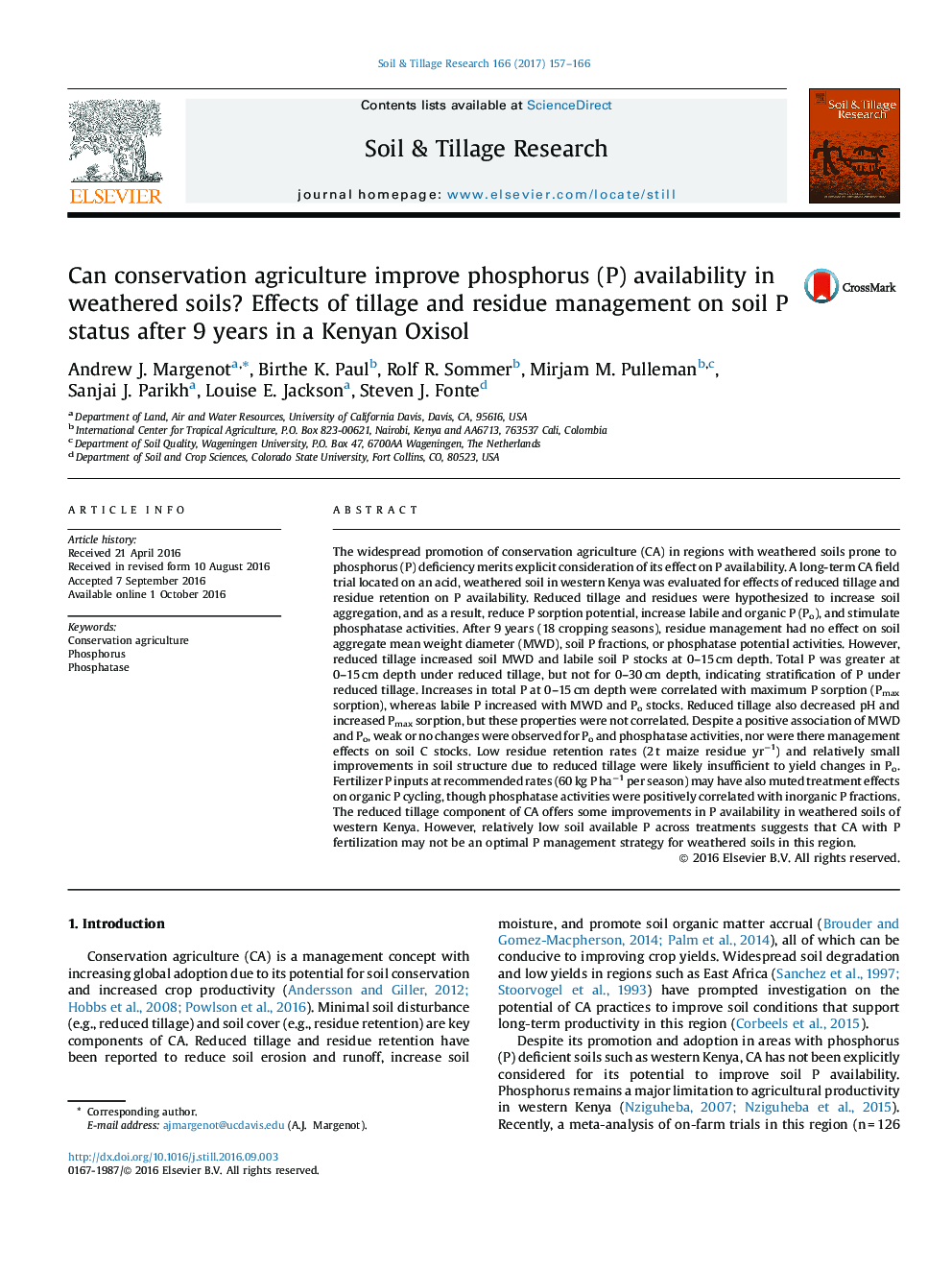| Article ID | Journal | Published Year | Pages | File Type |
|---|---|---|---|---|
| 4927619 | Soil and Tillage Research | 2017 | 10 Pages |
â¢Conservation agriculture effects on soil P were evaluated in a Kenyan Oxisol (9 yr).â¢Residue (2 t haâ1) had no effect on aggregation, P fractions, or phosphatase activity.â¢Reduced tillage increased aggregation, labile P, and P sorption, and decreased pH.â¢Weak or no changes occurred for organic C and P stocks and phosphatase activities.â¢The reduced tillage component of CA offers limited but positive impacts on soil P.
The widespread promotion of conservation agriculture (CA) in regions with weathered soils prone to phosphorus (P) deficiency merits explicit consideration of its effect on P availability. A long-term CA field trial located on an acid, weathered soil in western Kenya was evaluated for effects of reduced tillage and residue retention on P availability. Reduced tillage and residues were hypothesized to increase soil aggregation, and as a result, reduce P sorption potential, increase labile and organic P (Po), and stimulate phosphatase activities. After 9 years (18 cropping seasons), residue management had no effect on soil aggregate mean weight diameter (MWD), soil P fractions, or phosphatase potential activities. However, reduced tillage increased soil MWD and labile soil P stocks at 0-15Â cm depth. Total P was greater at 0-15Â cm depth under reduced tillage, but not for 0-30Â cm depth, indicating stratification of P under reduced tillage. Increases in total P at 0-15Â cm depth were correlated with maximum P sorption (Pmax sorption), whereas labile P increased with MWD and Po stocks. Reduced tillage also decreased pH and increased Pmax sorption, but these properties were not correlated. Despite a positive association of MWD and Po, weak or no changes were observed for Po and phosphatase activities, nor were there management effects on soil C stocks. Low residue retention rates (2Â t maize residue yrâ1) and relatively small improvements in soil structure due to reduced tillage were likely insufficient to yield changes in Po. Fertilizer P inputs at recommended rates (60Â kg P haâ1 per season) may have also muted treatment effects on organic P cycling, though phosphatase activities were positively correlated with inorganic P fractions. The reduced tillage component of CA offers some improvements in P availability in weathered soils of western Kenya. However, relatively low soil available P across treatments suggests that CA with P fertilization may not be an optimal P management strategy for weathered soils in this region.
